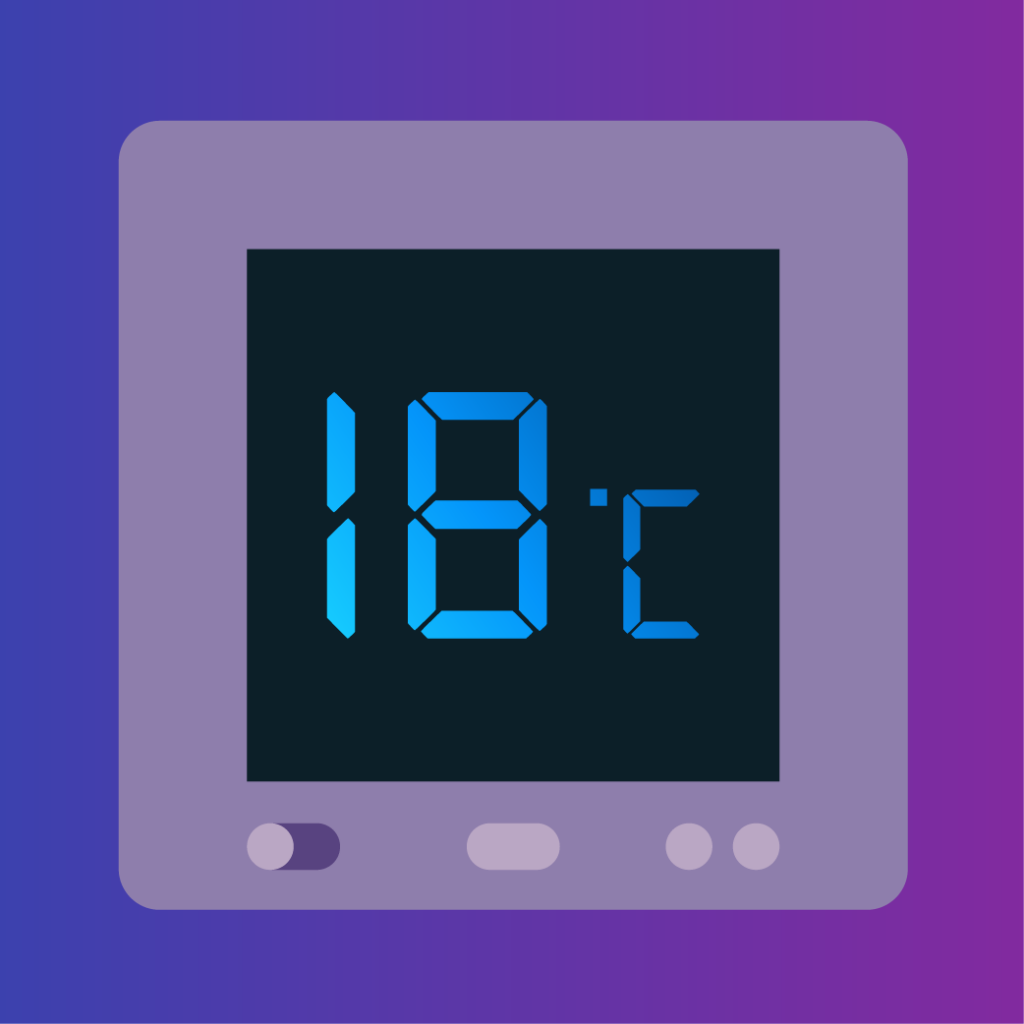How To Make Your Home Warmer
If you want to cut heating costs, you don’t need to sacrifice your comfort or spend lots of money making home improvements. Simply make a few changes to keep the heat in.
Reduce Heating Costs and Keep Your Home Warm
Creating a warm and cosy home during the colder months doesn’t have to come at the expense of soaring energy bills. By making informed decisions about how you use your heating, you can maintain comfort while significantly reducing costs.


Adjust Your Boiler’s Flow Temperature
If you have a combi boiler, reducing the flow temperature can help you save energy without changing the temperature of your home. This is a simple setting change to the temperature your boiler sends water to your radiators.
Lowering this means your boiler will be more efficient as it will be in condensing mode – where it recovers heat that would otherwise be lost. Whilst most are set to send water at 80 degrees, this is much higher than it needs to be as they can work just as well at 60 degrees.
It’s a really easy action that can lead to big savings – up to 12% on your gas bill. However, bear in mind that this is not suitable for all types of boilers.

Maintain The Right Temperature
Fine-tuning your thermostat settings can substantially reduce gas usage. Lowering your thermostat by a single degree could save 10% on gas bills. Dropping from 21 degrees to 18 would save around 30%. That’s £300 for an average home.
It might sound obvious, but if it’s 10 degrees outside and your thermostat is set to 20, then your heating is working to raise temperatures by 10 degrees. If your thermostat is set to 18, then it only has to do 8 degrees of heating. That’s 20% less heating and 20% less gas used.
The key is staying comfortable whilst reducing the temperature. Make sure to wear thicker clothes, layer up and get your slippers out! Swap to a high tog duvet and add extra bedding. Consider using hot water bottles or an electric blanket to keep warm overnight. This stops you heating the whole house.
Make sure to close the curtains and internal doors to stop draughts. Draughts make you feel colder and a natural reaction is to put the thermostat up. Stop the draughts instead!
When we talk to Loop customers we find a wide range of thermostat settings. There’s no right or wrong. The most important thing is that everyone in the home feels comfortable. If you can stay warm at home and save money it’s a win-win.

“It’s important to remember that being warm is important for your health and wellbeing. Using additional heating aids, like hot water bottles, helps you stay comfortable while running your central heating at a lower temperature – instead of turning off the heating altogether. Use your heating efficiently. That’s where the biggest savings can be made.”
Expert advice from the Energy Doctor

Optimise Your Heating Schedule
Make sure your heating controls are optimised for your daily routine. Schedule your heating to only be on when you’re normally in and add an hour if you’re at home unexpectedly. When setting your schedule, set your heating to turn off 30 – 60 minutes before you leave the house. With hot water in the radiators the house will stay warm without needing to burn more gas.
If you’re going away, either turn your boiler off or reduce the thermostat to a low temperature during the winter. We’d recommend 5 degrees to use minimal gas whilst stopping any pipes freezing during a cold snap.
Overnight, turning your heating off or set the thermostat to a low temperature as that uses less gas than running the heating on full. It’s important you feel warm, so make sure to use the right bedding or an electric blanket. On very cold nights, it can be worth putting the heating on, just consider setting the thermostat at a lower temperature than during the day.

Combat Draughts Effectively
Draughts allow warm air to leave your house and cold air to enter, wasting the heat you’ve paid for. They make you feel colder and less comfortable too. Luckily there are cheap ways to stop them and keep your home warm.
The most common areas to focus on are around windows, doors, and unused chimneys. Use draught proofing tape to seal round doors and windows and chimney balloons to block unused chimneys. Reduce internal draughts by keeping internal doors closed to feel warmer.
Be careful as you draught-proof as your house does need some ventilation. Keep air bricks clear, open trickle vents on windows and ensure bathrooms and kitchens are well ventilated.

Utilise Thermostatic Radiator Valves (TRVs)
TRVs are the rotating dials on radiators. They give greater control over room temperatures when your heating is on. They stop hot water flowing into a radiator when the room temperature reaches a certain level. This avoids wasting money by over-heating rooms.
If the temperature in the room falls below your set temperature, the TRV will open and hot water will flow into the radiator. If you set the TRV to a low value it will keep the room cooler, saving you gas. If you set it to a high value the room will get hotter.
TRVs are easily misunderstood! Some people set them to the maximum thinking this will lead to the room heating up quicker. This isn’t the case. TRVs control when to stop heating in a room and don’t affect the time it takes to get to temperature.
We recommend lower temperatures in bedrooms than living areas, and even lower temperatures in unused spare rooms. It may take a bit of trial and error to get your settings right, but it can lead to high savings.

Enhance Your Insulation
An uninsulated home loses around a third of all heat through walls and a quarter of heat through the roof. An average house with poor insulation will spend more than £13 per day to heat their homes on the coldest days this winter. Investing in adequate insulation will significantly reduce your heating bills.
The two insulation measures you should be considering are cavity wall and loft insulation to improve the warmth of your home. While they come at a cost, these measures pay themselves back quickest.
Many homes will qualify for 90% subsidies on insulation upgrades through the Great British Insulation Scheme. We’ve teamed up with insulation experts InstaGroup to make your insulation upgrades as easy as possible. Find out more in this blog article, which includes a handy checker to see if you qualify and a form to request a free consultation from InstaGroup.
Start by popping your head in the loft to check it has the recommended 27cm of insulation. If it doesn’t you can top it up yourself or pay a professional to do it for you. Installing loft insulation can cost up to £890 on average, but annual savings can reach £590. If the insulation is correctly installed, it can last for 40 years and pay for itself many times over.
It’s harder to check if your home has cavity wall insulation. However, as the insulation is injected through holes on the outside of your house, look out filled drill marks around 2.2cm in size. If you don’t qualify for an insulation subsidy, cavity wall insulation is relatively expensive, with costs reaching up to £1800. But, it can save up to £690 a year, making it an extremely worthwhile investment.






